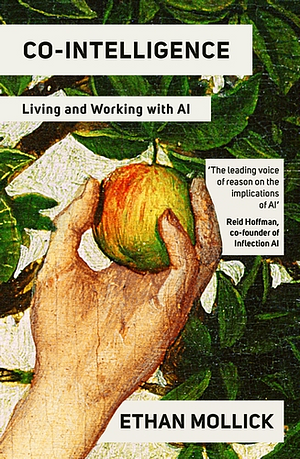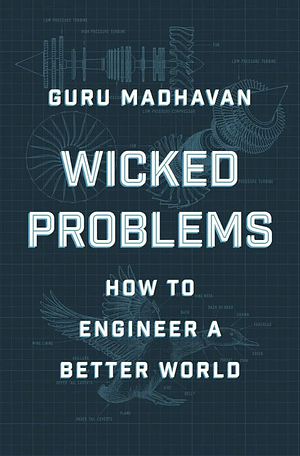Both/And Thinking - Paradox System (Chapter 4)
I’ve started reading Both/And Thinking and am capturing my thoughts here as I go. Right now these are mostly the raw notes as synthesis comes later. You may find it interesting to start with the first post in this series or to read them all.
Today’s reading, which should have been yesterday’s reading was good, but for some reason was harder to digest. I don’t know if it was because I couldn’t get started, more below in the notes section, or if it was just general enough it didn’t feel directly actionable. That said, the book has been solid so far and this doesn’t cause me to want to stop reading it.
The reading was about trying to move to a Paradox Mindset, where you are forcing/changing yourself to think about paradoxes more intentionally. The theme of the chapter is very summed up in the quote that opened it:
If you cannot make a change, change the way you have been thinking. You might find a new solution. —Maya Angelou
This was reinforced by a reference to research by psychologist Paul Watzlawick who “once argued, [that] the problem is not the problem; the problem is how we think about the problem.” This is particularly challenging because “[e]ngaging with paradox often brings us to the limits of our rational thought. But learning to value and accept tensions helps us avoid oversimplifying our presenting dilemmas and instead to explore more creative alternatives.”
The idea of tension was explored in depth. Beyond just differences in our own sensitivities to tension, it was pointed out that different types of work have different levels of tension. “Tensions swirl all around us. Some people seek them out, purposefully surfacing tensions to enable more creativity. Others may avoid or ignore them to minimize potential conflicts. Yet even two people in the same situation can experience varying degrees of tension. In our own research, we found that people who all had the same job and worked in the same organization reported different levels of tensions.”
[P]eople experience increased tensions in settings with (1) faster change, (2) greater plurality, or (3) more scarcity. The faster the pace of change, the more we experience tensions between what is and what will be. In terms of plurality, the more voices and perspectives from different people and stakeholders, the more we experience tensions between varied goals, roles, and values. And finally, the more that people experience a scarcity of resources, the more competition there will be over how the resources should be shared.
Moving to a paradox mindset means you can accept tensions as natural, valuable and energizing. This drives directly to changing the question from either/or to accommodating both … both/and.
A chart of differing level of engagement with tensions and their presence was presented. The key, as with many of these four-squares, is to get to the upper right, engaging zone, quadrant. This is the place where you are actively engaging with a both/and or paradox mindset to actual paradoxes or tensions you encounter. The authors’ research “found that the people in the engaging zone performed better at work. They were seen as more innovative and productive by their managers. Not only that, but they were also more satisfied with their jobs.”
The authors provide an online tool to test your mindset at https://paradox.lerner.udel.edu – I haven’t had a chance to use it yet.
The authors then walk through 4 parts of the paradox system:
Accepting Knowledge as Containing Multiple Truths (Not One Truth)
There is more than one lens of truth as opposites interact.
But as Nobel Prize–winning physicist Niels Bohr purportedly reflected, “There are trivial truths and there are great truths. The opposite of a trivial truth is plainly false. The opposite of a great truth is also true.”
This is further illustrated by the parable of the bline people and the elephant where each observer is convinced the elephant is wholly like the part they are touching. An 1800s John Godfrey Saxe poem about this parable is very apt here:
And so these men of Indostan Disputed loud and long Each in his own opinion Exceeding stiff and strong, Though each was partly in the right And all were in the wrong!
This component of all being wrong really struck me as I have often thought of it from the perspective of all being right without that chaser.
Another critical concept is the, borrowed from Improv, “Yes, and …” This activity sets up that you have to acknowledge someone else’s reality and build on it. This helps to prevent getting into ruts and building trench warfare situations.
Framing Resources as Abundant (Not Scarce)
This section was the hardest for me to get through. The opening section left me in disbelief, though they did make up for it quickly.
Many people approach these kinds of problems by looking for more effective ways to allocate resources—how to better slice the pie. This approach reflects a dichotomous mindset.
This felt very natural to me. Resources are by definition limited. But the authors started lose me when they followed it up with:
A paradox mindset challenges this assumption about resources. What if resources are not zero-sum? What if we don’t have to be constrained by resources? What if we can expand their value? Rather than assuming that values are scarce, a paradox mindset involves assumptions about resources as abundant—we can expand their value through their use.
However, they did ultimately provide some examples, which helped.
One was about splitting a pizza. If two people meet for dinner and decide to split a pizza, each paying 50% of the cost, how do you split the actual pizza. 50/50 may not be right if one party is hungrier than the other, especially if the hunger was caused by the less hungry party. What if there has always been an odd number of slices and one party has consistently gotten it in the past? “We are assuming that there is one dimension to the pie—slices—and that resource is fixed.”
However, this quote shows that you can “grow the pie” and quite nicely:
Let’s say you and I started talking about pizza on our way to the restaurant. Maybe we realized that you really like the inside of the pizza—the sauce, the cheese, the toppings. You always leave the crust behind. (You give a nod to a low-carb diet, but your preference is truly just a layover from your nine-year-old self.) Let’s say I’m not a toppings person at all; I’m vegan and won’t eat the cheese or meat anyway. I usually just pick it all off and eat the bread (I give a nod to French cuisine, but again, it’s a layover from my nine-year-old self.) From that information, we could think of a different way to split the pie; you get all the middle, and I get all the crust. Rather than each of us having four slices and only half the pie, we now each have a whole pie’s worth of the parts that we like to eat. Bazerman describes this approach as “growing the pie.”
A second example about turning one person’s trash into another person’s treasure was provided. The concept being that some folks know how to stretch a resource mightily.
The remainder of the section tried to show more examples. I was impressed by the end, but left feeing unable to apply this easily to the kinds of resources I encounter in my domain of problems. This is the first time this has happened with this book, which overall makes it still a great book.
Problem Solving as Coping (Not Controlling)
In general we start by solving problems by trying to control the space. A paradox mindset moves us more into a space where we cope with the problems and other “chaos” swirling around them. This is even more important when you consider that paradoxes rarely if ever go away.
Throughout the book, we use language that reinforces this notion of coping, rather than controlling. We don’t talk about resolving paradoxes but instead describe navigating, engaging with, or leveraging them. Rather than talk about minimizing or resisting tensions, we speak of accepting and embracing them. Language is a first step to changing any underlying assumptions. But first, all of us must also recognize how hard it is to let go of control.
Here there is what feels like a bit of a sidebar discussion on the illusion of control that can arise when we think we can control random events. While interesting, it doesn’t merit much conversation here by me. That said, you should read it as it discusses the gambling game, craps, which everyone should play and understand once in their lives.
Leadership comes up in this section as leaders often solve or drive the solving of problems. “In their book The Practice of Adaptive Leadership, Ronald Heifetz, Alexander Grashow, and Marty Linsky at the Harvard Kennedy School distinguish between two types of problems—technical problems and adaptive challenges.” Technical problems may be complex or important but they have a known solution. “In contrast, adaptive challenges have no road map. They are messy, uncertain, emergent, and filled with competing demands. Adaptive challenges are paradoxical.”
There is a lovely definition of leaders vs managers:
He contrasts leaders with managers, who often move quickly toward problem resolution in search of structure and stability. Managers seek control in the face of uncertainty; leaders learn to cope.
Hanging out in the Balcony
This is an analogy about trying, at a dance, understand the movements of the group in response to stimuli such as the music and how people enter and exit the dance floor. This is difficult on the dance floor but easier to observe from the balcony above the floor. The core challenge is that you can’t affect the dancing from the balcony. Therefore, “the challenge is to move back and forth between the dance floor and the balcony, making interventions, observing their impact, and then returning to the action. The goal is to come as close as you can to being in both places simultaneously, as if you had one eye looking from the dance floor and one eye looking down from the balcony, watching all the action, including your own.”
Bonus Quote
This anecdote, while useful to the narrative didn’t make my final notes cut, however if you have kids and are in a relationship it may resonate:
I told myself. “Who lets their kids watch hours of videos of other people playing video games?” (Apparently, the answer is that a lot of people do, given the number of hits on these videos.) Then, because I didn’t really want to call myself a terrible parent, I did what any unreasonable partner would do. I blamed my husband. If it wasn’t my fault, then I’d figure out some reason that it must be his.
Chapter Takeaways
For completeness and my future reference, the authors suggest these takeaways
- Assumptions form the mindsets and cognition that inform our action. A paradox mindset involves both experiencing tensions and reframing those tensions from an either/or (dichotomous) to a both/and (paradox).
- Both/and thinking begins with shifting our underlying assumptions in three areas:
- Knowledge: from thinking about truth as a singular issue of right versus wrong to recognizing that multiple truths can coexist;
- Resources: from thinking about scarcity to abundance, from how to slice the pie to designing creative approaches to increase the pie’s value and impact;
- Problem solving: from desiring control to coping, recognizing that vital capabilities for navigating the uncertainty of paradox involve adaptability and learning.
Note: For a variety of reasons this chapter was challenging. While part of it was that it, unlike the others I’ve read so far, didn’t really “grip” me at the outset, I can’t lay all of the problems at the authors feet. Instead I need to acknowledge that my head was swimming a bit on Monday and that my routine was broken. I’ve normally gone to a cafe to read after dropping my daughter off at school. But on Monday I got a haircut instead and the routine fell apart. It was interesting.
Today, when I finally finished it, I was in a cafe that I turned out not to like very much and that defaulted to putting milk (ick) in my iced coffee. I can’t fully blame the cow and kava for the lack of engaging chapter, but the world didn’t align for sure.
Some of you may also notice that this is being posted very late. While I did start on this much earlier, a very busy day prevented me from finishing sooner.
Suffice it to say I am happy to be moving on to a new chapter tomorrow.



